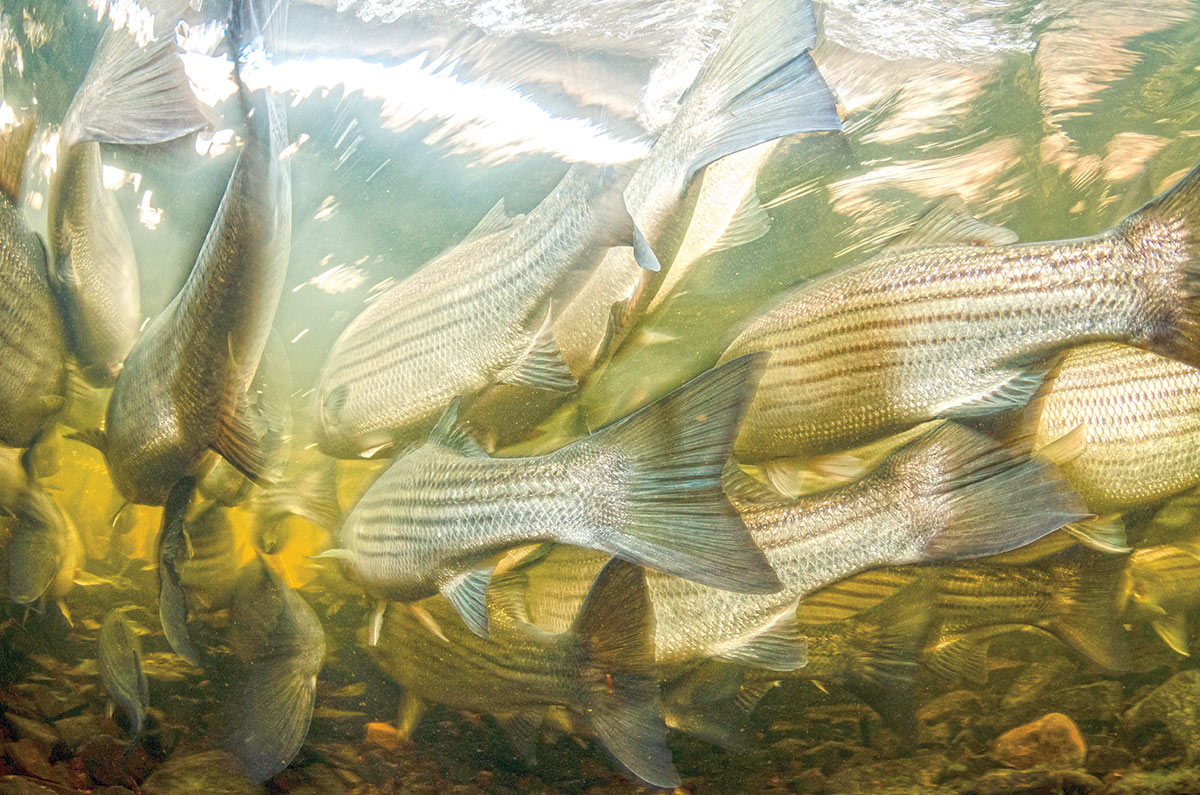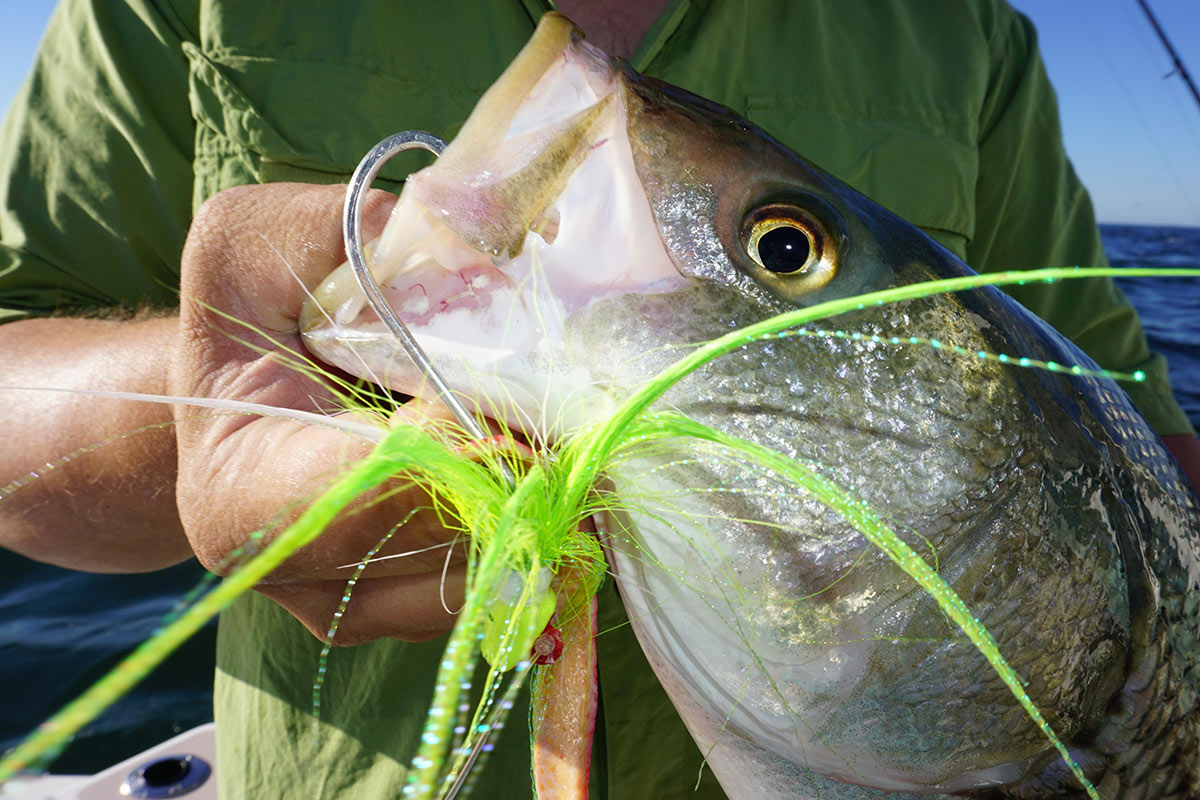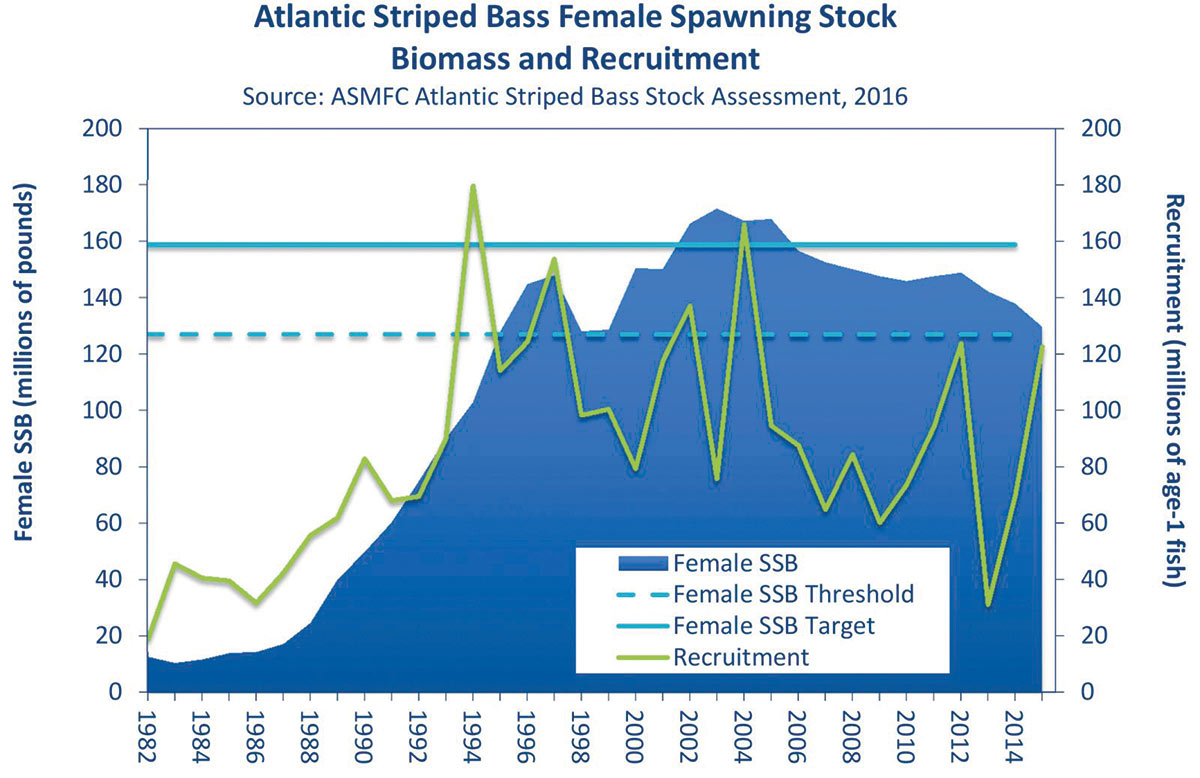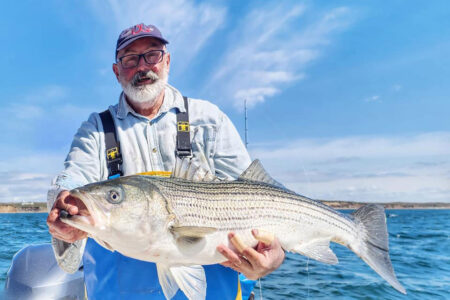
“One emerging concern is that a lingering federal shutdown may prevent the completion of the final peer review report prior to the Commission’s February meeting.”
Bob Beale, ASFMC
From February 5-7, the Atlantic States Marine Fisheries Commission (ASFMC) will convene its annual winter meeting at the Westin Hotel at 1800 Jefferson Davis Highway in Arlington, VA. A major topic of interest for Atlantic coastal anglers will be the current state of the striped bass stock and management efforts in the future.
Over the past year, substantial work has been done by scientists on a comprehensive benchmark stock assessment of Atlantic Coastal striped bass. From November 27-30 at a formal peer review conducted at the Northeast Fisheries Science Center’s 66th Stock Assessment Workshop (SAW/SARC), the ASMFC Atlantic Striped Bass Assessment Team presented their latest assessment findings to an independent peer review panel.
In the draft Striped Bass Stock Assessment Report presented to the panel, the document itself noted “This information is distributed solely for the purpose of pre-dissemination peer review. It has not been formally disseminated by NOAA. It does not represent any final agency determination or policy.” Despite the disclaimer, some folks couldn’t wait to leak the presentation’s “overfished” and “overfishing” slides contained within the draft assessment; in turn, social media channels were jammed with varied messages on the health and future of striped bass leading into the holiday season, with some folks warning of the striper Armageddon and others dismissively calling out reports as little more than “fake news.”
As with everything in the sociopolitical world today, the truth probably lies somewhere in the middle. The actual peer-reviewed assessment that was ultimately finalized will not actually be presented and deliberated until the ASMFC convenes as a group in Arlington, VA. On Wednesday, February 6, the Striped Bass Management Board is slated to review the final 2018 Benchmark Stock Assessment and Peer Review Reports and is expected to consider some type of management response to the data.
While preliminary numbers are still well above those dark and gloomy days in the 1980s when there were less than 20 million pounds of spawning class stripers in the coastal population, early indicators are that some type of management response to striped bass harvest will be required in the very near future.
In the fisheries management world, the target is where you want the stock to be, while a threshold is the point at which action must be taken should numbers fall below the mark. As per the preliminary numbers, overall coastwide striped bass SSB is approximately 23 thousand metric tons (mt) below the threshold level of 91.4 thousand mt.
In terms of pounds of fish, consider that the last stock assessment on striped bass in 2016 showed that while the striped bass fishery was not then considered overfished nor experiencing overfishing, the SSB had in fact been on a 12-year overall decline. In 2015, SSB was estimated at 129 million pounds, just above the threshold of 127 million pounds but below the target of 159 million pounds.
If you didn’t see the full feature at TheFisherman.com back in December, you may find the following statistical information helpful in advance of February’s ASMFC meeting. There’s a little addendum you may find interesting below that we didn’t have included in the online version, and that’s related to the full-scale government shutdown to start the New Year.
Where Are They?
During a benchmark assessment process for any fish stock, scientists and fisheries experts work together to incorporate new assessment models, while pulling together seine or trawl surveys and harvest reports from both the recreational and commercial sectors. As these stock analysts pore over the data, a figure or two might be modified, or a decimal point moved left or right; science being what it is, a fluid and dynamic medium.
On the other hand, of major concern within the conservation community and much of the striper world is with regard to biological reference points set by scientists, including those actual targets and thresholds. There are some members of the ASFMC who believe that certain biological reference points are too conservative; for example, lowering the target and threshold to accommodate new modeling approaches, environmental factors, migration shifts or updated recreational harvest (MRIP) methodologies could actually remove the “overfished” and “overfishing” by way of a penstroke.
According to ASFMC executive director Bob Beale, the Striped Bass Management Board could adjust the management plan targets and thresholds, which could affect the stock status determination, but he urged the public to “temper any reaction to the preliminary results and wait until the final assessment and peer review results are published.”
But here’s that government shutdown catch. “One emerging concern is that a lingering federal shutdown may prevent the completion of the final peer review report prior to the Commission’s February meeting,” Beale said on January 8, adding “This would likely delay the Board’s ability to react to the results of the new assessment.”
Are They in the EEZ?
As for the trawl surveys and where researchers collected striped bass samples used in the overall stock analysis, questions remain as to whether or not the spawning class fish are truly gone, or if they’ve traveled farther east into deeper offshore grounds in the Exclusive Economic Zone (EEZ) or even into Canadian waters. “There seem to be a lot of fish in different areas where they’ve never been before, that’s a fact due to warming waters, climate change, whatever you want to call it, that’s a fact,” said Jim Donofrio, executive director of the Recreational Fishing Alliance (RFA). “That’s why NOAA has been talking about incorporating this type of scientific data into future assessments, they have to. I suspect there may be far more fish in the EEZ than we could possibly imagine,” he added. The preliminary report reviewed at the November SAW/SARC cited a North Carolina Cooperative Winter Tagging Program does suggest that striped bass distribution on their overwintering grounds during December through February has changed significantly since the mid-2000s.

“The migratory portion of the stocks has been well offshore in the EEZ, requiring travel as far as 25 nautical miles offshore of Chesapeake Bay to locate fish to tag,” the report stated, though it also noted that acoustic telemetry work on adult fish that aggregate on Stellwagen Bank located in the EEZ and beyond 12 nautical miles also move inshore as part of their normal migratory and feeding behavior.
While researchers acknowledge that striped bass are spending more time offshore in waters protected against commercial and recreational harvest, the common belief is that these spawning class fish must travel inshore at some point during the year, where it’s hoped that catch and trawl surveys will intercept them for research efforts.
Year Class Protection
Mike Waine, former fisheries management analyst at NOAA Fisheries and the ASMFC, now Atlantic Fisheries Policy Director at the American Sportfishing Association (ASA), has been tracking the stock assessment process and said there will be a lot for ASMFC Management Board members to digest in February.
“SSB has been on a gradual decline since 2003, and the Management Board took corrective action in 2015, but SSB has not rebounded as much as hoped,” Waine said of the preliminary report.
In 2015, Atlantic coastal states were required to reduce commercial and recreational striped bass harvest by 25% (Chesapeake Bay states/jurisdictions were required to implement a 20.5% harvest reduction from 2012 levels), with much of the effort aimed at protecting a valuable 2011 year class, which was the highest recruitment level of young fish since 2004.
“Protection of strong year classes has typically led to management success in the striped bass fishery,” Waine noted. Following along the ASFMC process, Waine said when the Board receives the final stock assessment document in February, they will likely request projections from the technical committee to further evaluate how different management options will impact the striped bass stock moving forward. That ultimately will help the Commissioners develop a suite of final options designed to turn SSB numbers back towards an upwards trajectory. Waine also noted there will be plenty of opportunity for interested stakeholders to be involved in that process.

Overall, the preliminary report shows the decline in total biomass of striped bass is far less than the drop in spawning stock biomass. “While the SSB has declined in recent years, there are still plenty of mature females to support strong year classes with favorable environmental conditions,” Beale told The Fisherman earlier this year.
Coupled with the fact that the findings thus far show that mortality has increased on aged 8 and up striped bass while both fishing mortality and abundance of aged 1 and up fish has remained relatively stable coastwide, it might suggest a need for better management measures on larger, spawning class stripers. “I don’t think the sky is falling on striped bass, not yet,” said Donofrio. “But can they be managed better? Absolutely!”
Despite the recent decline, the stock is still well above the horrifically low SSB numbers experience during the 1980’s stock collapse, a crash which ultimately led to passage of the Atlantic Striped Bass Conservation Act and a coastal moratorium on harvest. The fishery was ultimately reopened in 1990, with the stock declared rebuilt as of 1995.
“In the early ‘80s, looking at where striped bass abundance was, the moratorium discussion was reasonable and played a huge part in the recovery,” said Mike Leonard, ASA vice president of government affairs. “But we’re nowhere near where we were in the 80’s, and whatever response comes from management needs to acknowledge the condition of the stock today.”
“We need to keep things in perspective, not to put lipstick on this, but it’s not necessarily doom and gloom,” Leonard added. While the coastal run of striped bass throughout The Fisherman Magazine’s region has certainly been less than desirable in recent years, no one should be calling for a coastwide “shutdown” of striped bass fishing just yet.
Not yet. We might not even be able to have a sensible debate on the subject, until our “shutdown” of government services comes to an end, if it hasn’t already.
| ASMFC UPDATES |
|---|
|
The Atlantic Striped Bass Management Board is slated to review the 2018 Benchmark Stock Assessment and Peer Review Reports for striped bass on Wednesday, February 6 from 2:30 to 5:30 p.m. at the Westin Hotel at 1800 Jefferson Davis Highway in Arlington, VA. At the time, the Board is expected to consider management response based on the final peer-reviewed report. Other items on the ASFMC agenda at the time are
For more information on the upcoming ASFMC hearings and webinar participation instructions go to www.asmfc.org. |




